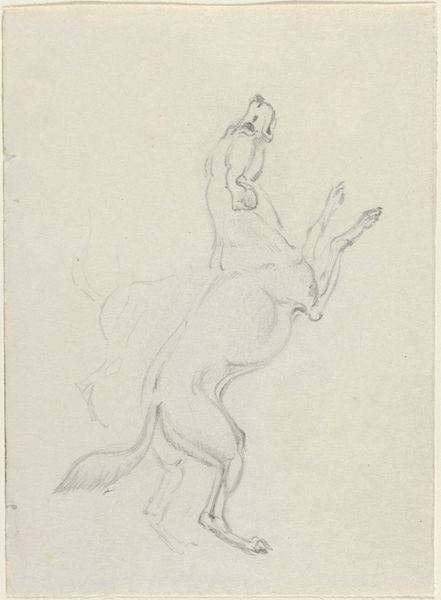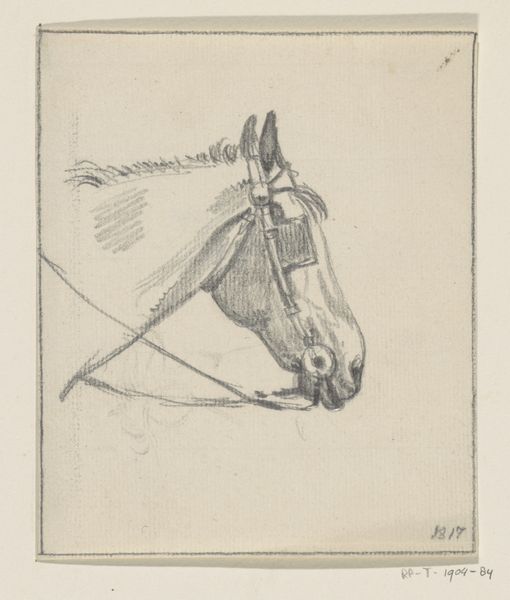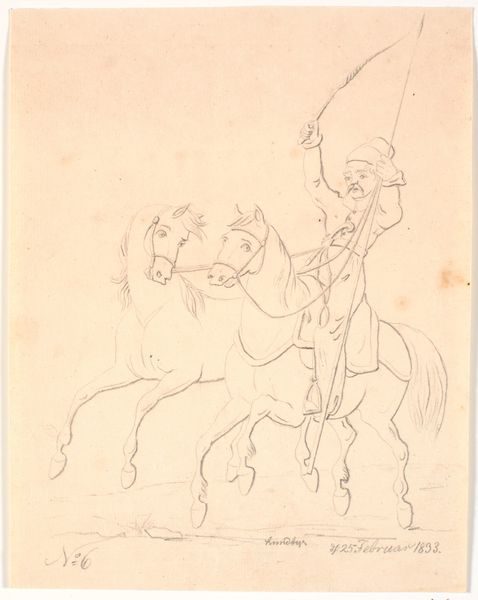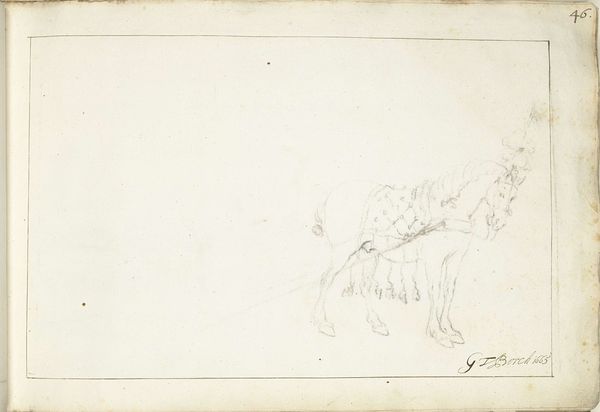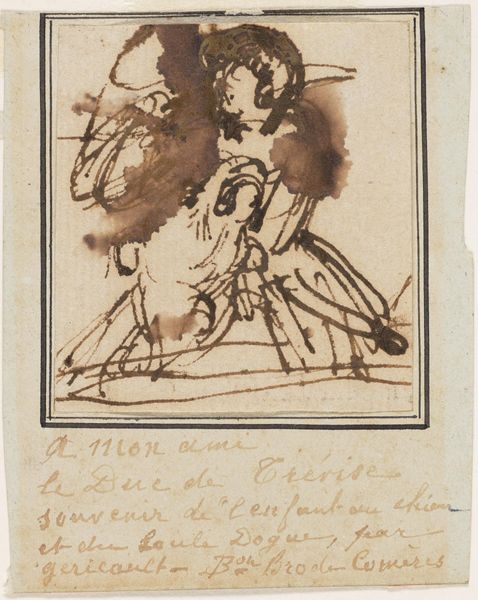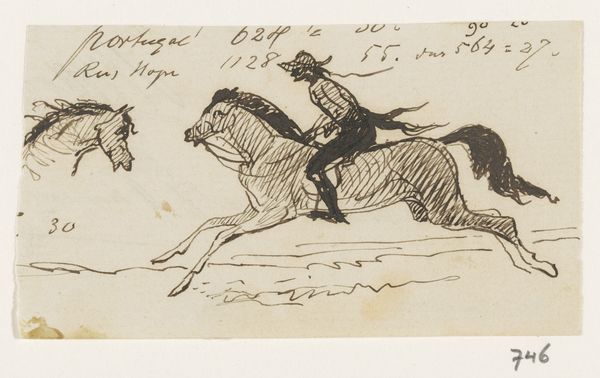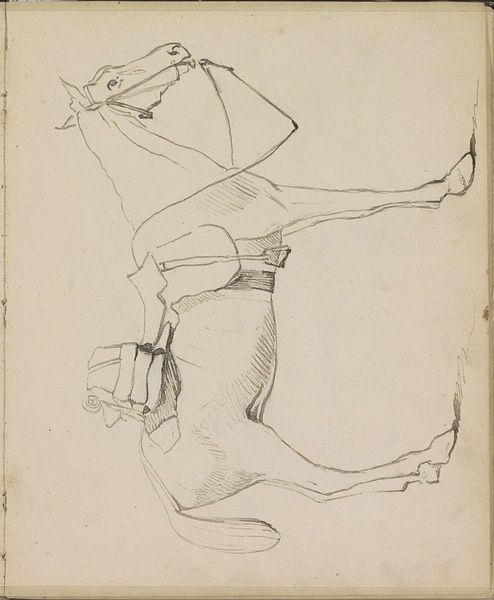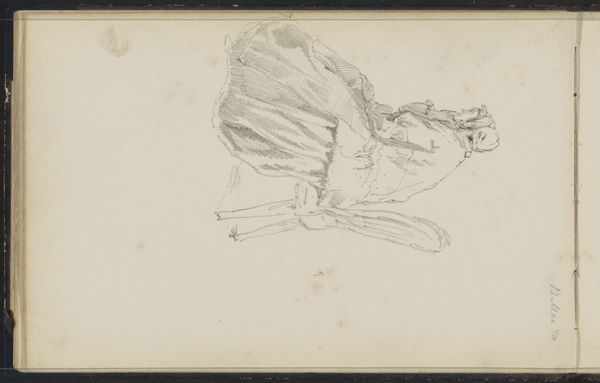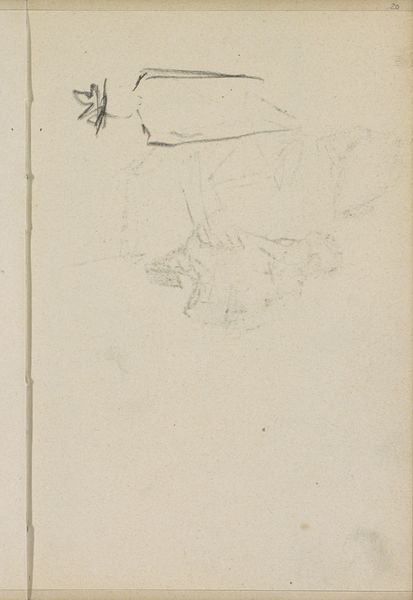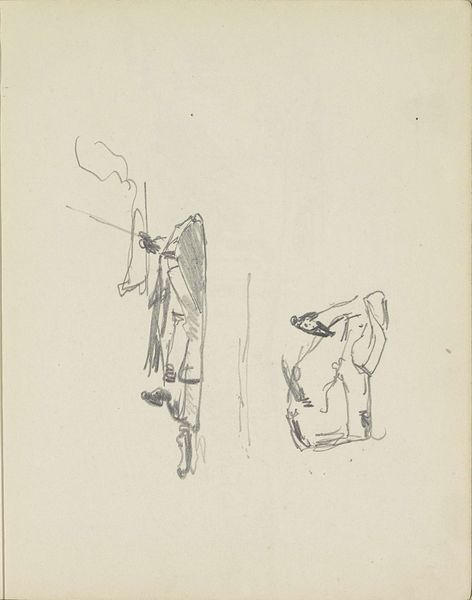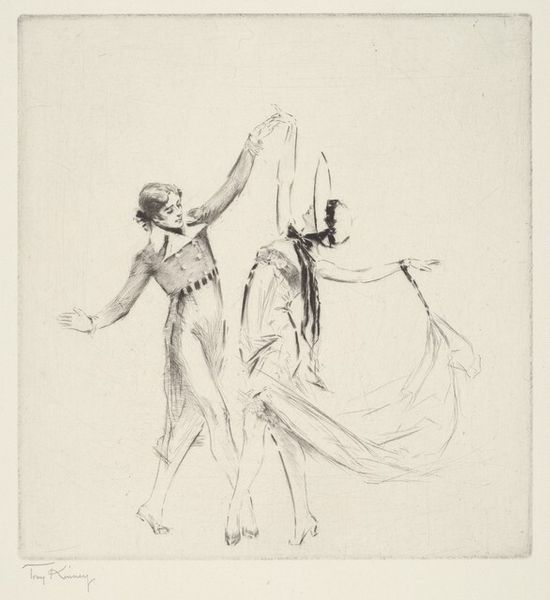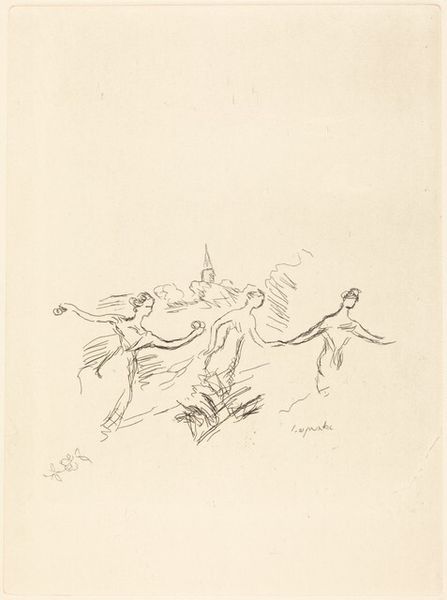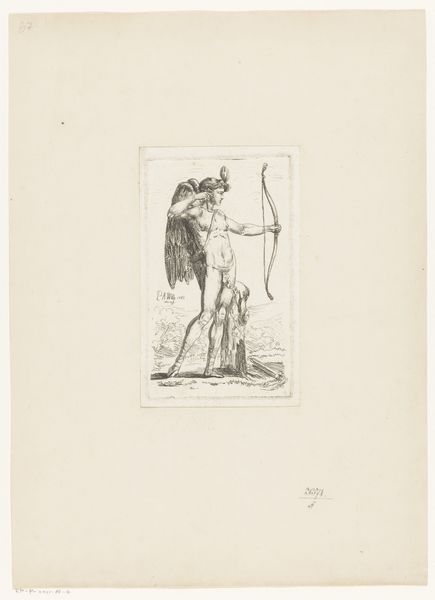
drawing, print, pencil
#
drawing
# print
#
pen sketch
#
pencil sketch
#
landscape
#
figuration
#
pencil
#
symbolism
Dimensions: 6 3/8 x 4 in. (16.2 x 10.1 cm)
Copyright: Public Domain
Curator: Welcome. Here we have Max Klinger’s pencil and print work, "Pegasus and the Young Bellerophon," created sometime between 1870 and 1920. It’s a mythological scene held within the Metropolitan Museum of Art’s collection. What strikes you initially? Editor: An unsettling grace. The sketch lines, though delicate, seem to capture a moment of poised tension. The grays offer a spectrum of emotional registers here—it almost feels like witnessing a half-formed memory struggling to emerge from the subconscious. Curator: The symbolism is layered. Bellerophon, astride Pegasus, embodies the heroic aspiration, but Klinger’s treatment diverges from the traditional triumphant portrayal. Pegasus, typically a symbol of inspiration, seems burdened. Does the sketch hint at a darker destiny for both figures? Editor: The positioning, with Bellerophon clinging to Pegasus’s back, could be interpreted as a visual metaphor. Is it control or co-dependence? The use of line directs us, however. Notice how Klinger uses dense hatching to describe mass in Pegasus' flank but then leaves a delicate single line to delineate the rearing legs of the winged steed? He has simplified the composition to the point of abstraction. Curator: I agree; the power dynamic seems precarious, doesn’t it? Pegasus, the divine creature, almost appears weary. This portrayal echoes the Greek myths where Bellerophon, intoxicated by his success, attempts to fly to Mount Olympus on Pegasus, only to be cast down by Zeus. There is this sense of hubris embedded in Klinger’s subtle rendering, a fall waiting to happen. Editor: Precisely! And the visual language mirrors this fragility. The seemingly casual quality of the sketch lends an immediacy to this fateful moment. The texture created by the varying pressures of the pencil work, contrasted with bare paper, suggests not just form, but also the very potential for the collapse of form, narratively and physically. Curator: It becomes a commentary on ambition, perhaps, and the dangers of unchecked desires. By leaving areas unfinished, it prompts us to question the idealized visions of heroism. Editor: Indeed. The piece's strength resides in the potent interaction between technical execution and symbolic depth. Klinger seems to suggest not just a narrative of aspiration and fall, but of the unstable structures upon which we build our own ideals and self-image. Curator: Thank you, those observations open up new interpretive paths through classical narratives rendered with a modern hand. Editor: My pleasure, and yours was enlightening in return.
Comments
No comments
Be the first to comment and join the conversation on the ultimate creative platform.
